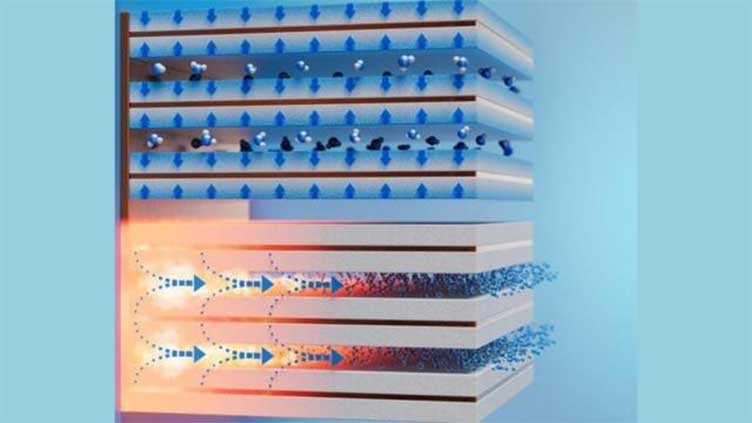US scientists turn dry air into drinking water with 5 times more efficiency

Technology
Even in desert-like conditions, the fins were saturated with water in about an hour
(Web Desk) - A collaboration of researchers at multiple universities in the US has successfully demonstrated the use of adsorbent fins to harvest water from the air.
The approach is more efficient than water harvesting tech tested before and can also help secure water in dry and arid regions, according to the press release.
Access to clean water is expected to trouble millions of people as the planet warms and climatic conditions become more extreme.
Traditionally, our water supplies have been dependent on the availability of local water bodies. However, with advances in technology, it is now possible to extract water from the air.
Estimates suggest that trillions of liters of fresh water are available in the Earth’s atmosphere as water vapor. One only needs to find an efficient method to convert this water vapor into liquid form for use locally.
In areas where fog or dew is common, it is relatively easier to cool it down and access fresh water. Researchers at the Massachusetts Institute of Technology, the University of Tennessee Knoxville, and the Georgia Institute of Technology have designed a new humidity harvester for comparatively drier areas.
Previous work in this area has shown that harvesting humidity in relatively dry regions requires special materials.
Various materials, ranging from temperature-responsive hydrogels to metal-organic frameworks, have been used for this purpose. Crystalline aluminosilicates, also known as zeolites, can also be deployed for this application and are good at absorbing moisture from the air, even when humidity is low.
The extraction of water is also relatively simple and requires only the application of heat. The US-based researchers suggest that for the technology to be deployed in the real world, the setup needs to be small and compact and ideally connected to a device that produces heat as a by-product.
To design their compact water harvester, the researchers used a novel fin design for water adsorption. The team created this fin structure by sandwiching thin copper sheets between copper foam coated in a zeolite material.
To demonstrate their technology, the team built a harvester device with ten small fins placed next to each other, no wider than two millimeters apart.
The setup was placed on a base copper plate and tested in an environment with 10 percent relative humidity, similar to the air in a desert.
The team found that the fins were saturated with water within the hour. They could harvest the water by increasing the temperature to 363 degrees Fahrenheit (183 degrees Celsius).


